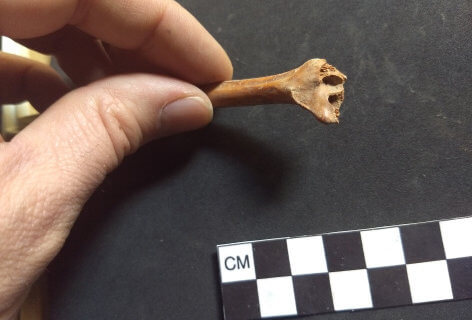AMES, Iowa — North America famously first entered the world stage in 1492 thanks to Christopher Columbus — although Leif Erikson fans may disagree! Before that however, present day scientists believed the first humans set foot on the North American continent roughly 10,000 years ago – at least until now. New evidence collected by Iowa State University researchers suggests humans made their way to North America 30,000 years ago. That would be about 200 centuries earlier than any current scientific and historical records can prove.
Andrew Somerville, an assistant professor of anthropology in world languages and cultures at ISU made this potentially groundbreaking and history-shaping discovery in the Tehuacan Valley of Mexico. Somerville and his team had originally made the trek across the border to study the origins of agriculture in the local region. Part of that work was establishing when humans began residing in the Coxcatlan Cave, a local archeological site.
Unearthing a prehistoric dinner table?
In an attempt to answer that question, the team obtained radiocarbon dates for a number of rabbit and deer bones discovered in the cave back in the 1960s. As soon as the research team saw how old the bones appeared to be, they realized they may have stumbled upon a much bigger discovery.
The radiocarbon process concluded the bones were about 33,448 to 28,279 years-old. This throws a major wrench into the long-supported theory that early humans first made their way to North America about 13,000 years ago via the Bering Land Bridge.
“We weren’t trying to weigh in on this debate or even find really old samples. We were just trying to situate our agricultural study with a firmer timeline,” Somerville says in a university release.
Study author note the extremely old dates in the cave are very surprising.
“It means that we need to take a closer look at the artifacts recovered from those levels,” the study author adds.
Of course, how can we be sure those 30,000 year-old animal bones were left there by humans? It’s certainly plausible those bones are leftovers from a pre-historic dinner party, but there many other potential explanations. Researchers are hopeful that closer examinations of the bones will detect some cut marks or thermal alternations that would suggest human cooking or butchering. Scientists also discovered “possible” stone tools within the early levels of the cave and they will undergo further testing.
“Determining whether the stone artifacts were products of human manufacture or if they were just naturally chipped stones would be one way to get to the bottom of this,” Somerville notes. “If we can find strong evidence that humans did in fact make and use these tools, that’s another way we can move forward.”
So what exactly does all of this mean about human history?
Somerville speculates the only way humans would have been able to make it to North America 30,000 years ago would have been by boat moving down the Pacific Coast. However, this begs the question where exactly were they coming from and why did they choose to make the journey?
“Pushing the arrival of humans in North America back to over 30,000 years ago would mean that humans were already in North America prior to the period of the Last Glacial Maximum, when the Ice Age was at its absolute worst,” the ISU researcher concludes. “Large parts of North America would have been inhospitable to human populations. The glaciers would have completely blocked any passage over land coming from Alaska and Canada, which means people probably would have had to come to the Americas by boats down the Pacific coast.”
The study appears in the journal Latin American Antiquity.

What no comments. WOW all that talk about illegal immigrants or border invaders. And there is a good possibility that people that were not from Europe made it here to this part of the world almost 30 thousand years ago. Who are the real border jumpers?
I think about this too. It is like all humans are temporarily natives and eventually immigrants, and it is mostly people fleeing inhospitable climates.
And how do you know those inhabitants 30,000 years ago were not from Europe or Africa?